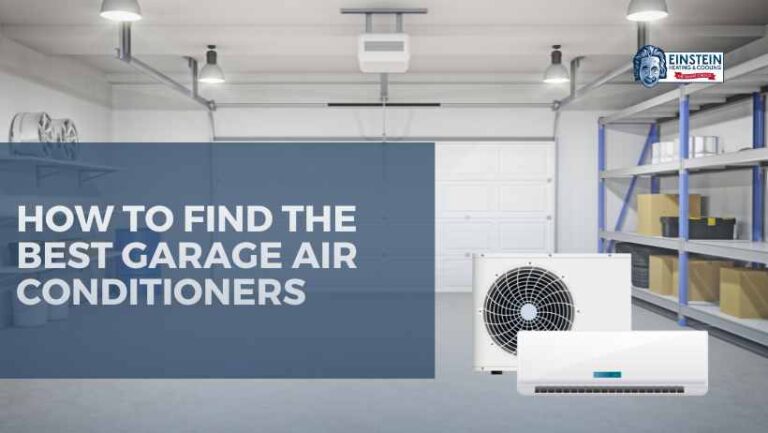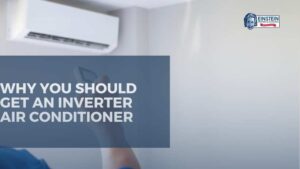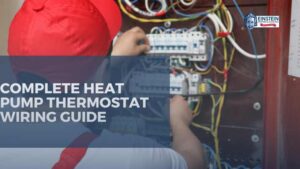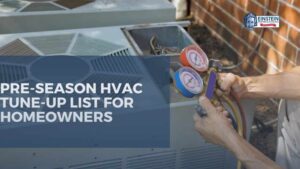When it comes to creating a comfortable workspace in your garage, a reliable air conditioner is a game-changer. In this comprehensive guide, we will explore the factors you need to consider when choosing and installing a garage air conditioner.
Factors to Consider When Choosing a Garage Air Conditioner
1. Determine the Size of Your Garage
- Consider the square footage of your garage.
- Account for insulation and ceiling height.
- Choose the appropriate BTU (British Thermal Unit) rating based on the garage size.
2. Types of Garage Air conditioners
- Window Air Conditioners:
- Easy HVAC installation in windows.
- Cost-effective solution.
- Portable Air Conditioners:
- No permanent installation is required.
- Offers flexibility in positioning.
- Mini-Split Air Conditioners:
- Ideal for garages lacking windows.
- Provides efficient cooling without ductwork.
3. Energy Efficiency
- Look for units with high EER (Energy Efficiency Ratio) ratings.
- Consider Energy Star-certified models to save on electricity costs.
- Opt for inverter technology for variable speed and improved efficiency.
4. Noise Level
- Choose a garage air conditioner with a noise level suitable for your workspace.
- Consider noise levels in both indoor and outdoor units.
- Check customer reviews for insights on noise performance.
5. Installation Requirements
Window Air Conditioners:
- Measure the window opening for proper fit.
- Ensure a secure installation with proper support.
Portable Air Conditioners:
- Set up near a window for exhaust hose installation.
- Ensure a proper electrical outlet is nearby.
Mini-Split Air Conditioners:
- Hire a professional HVAC technician for installation.
- Plan for the location of the indoor and outdoor units.
6. Maintenance and Cleaning:
- Regular maintenance is crucial for the optimal performance of your air conditioner. Choose a unit with accessible filters and components for easy cleaning.
- Check manufacturer guidelines for recommended maintenance schedules and procedures to ensure longevity.
7. Cost Considerations:
- Evaluate the initial cost of the air conditioner, including any additional installation expenses.
- Consider long-term operational costs, including energy consumption and potential maintenance requirements.
- Compare prices and features across different models to find the best balance between affordability and functionality.
8. Durability and Build Quality of Garage AC Unit:
- Assess the durability and build quality of the air conditioner to ensure it can withstand the demands of a garage environment.
- Look for models with corrosion-resistant materials, especially if your garage is prone to humidity or temperature fluctuations.
9. Warranty Coverage:
- Check the warranty offered by the manufacturer to safeguard your investment.
- Understand the coverage for various components and inquire about the terms and conditions for warranty claims.
10. Smart Features and Controls:
- Consider air conditioners with smart features and controls for convenient operation.
- Some models offer remote access, programmable settings, and compatibility with smart home systems, providing enhanced user experience.
11. Compatibility with Power Supply:
- Ensure that the chosen air conditioner is compatible with the electrical capacity of your garage.
- Check the voltage requirements and ensure the availability of a stable power supply for optimal performance.
12. Climate Considerations:
- If your garage is located in an area with extreme temperatures, ensure the chosen air conditioner can handle the climate conditions effectively.
- Look for units with features like adjustable fan speeds and temperature controls to adapt to varying weather conditions.
13. Reviews and Recommendations:
- Research customer reviews and seek recommendations from trusted sources to gather insights into real-world performance and user satisfaction.
- Consider the reputation of the brand and the overall feedback from users who have similar garage setups.
How to Put Air Conditioner in Garage: Installation Tips
1. Prepare Your Garage
- Clean and declutter the space for easy installation.
- Ensure proper insulation to maximize cooling efficiency.
- Check for any leaks or gaps that might affect insulation.
2. Electrical Requirements
- Hire a licensed HVAC technician to assess and upgrade your electrical system if needed.
- Ensure the garage’s electrical capacity can handle the air conditioner’s power requirements.
- Use dedicated circuits to avoid overloading the electrical system.
3. Ventilation
- Window Air Conditioners:
- Install in a window with proper ventilation.
- Use weather stripping to seal gaps around the unit.
- Portable Air Conditioners:
- Place near a window to vent hot air outside.
- Use the provided window kit to seal the opening. Be ready for any portable AC repairs when needed.
- Mini-Split Air Conditioners:
- Ensure proper ventilation for both indoor and outdoor units.
- Follow manufacturer guidelines for installation.
4. Maintenance
- Clean or replace air filters regularly for optimal performance.
- Check for any debris or blockages in the condenser and evaporator coils.
- Schedule professional maintenance annually for more complex systems.
5. Cost Considerations
- Window Air Conditioners:
- They are generally the more affordable garage AC unit option.
- Check for additional costs such as brackets or support.
- Portable Air Conditioners:
- Consider the cost of additional accessories like window kits.
- Factor in potential energy savings over time.
- Mini-Split Air Conditioners:
- Higher upfront cost but may provide long-term savings on energy bills.
- Consider installation costs, including hiring a professional.
6. Climate and Temperature Range
- Before placing an air conditioner in a garage, consider the local climate to ensure the air conditioner can handle temperature extremes, such as living in Phoenix.
- Choose a unit with a wide temperature range for consistent cooling in all seasons.
- Some models come with heating capabilities, providing year-round comfort.
7. Smart Features and Connectivity
- Explore air conditioners with smart features for remote control and monitoring.
- Check compatibility with smart home systems for seamless integration.
- Smart features can enhance energy efficiency by allowing precise control.
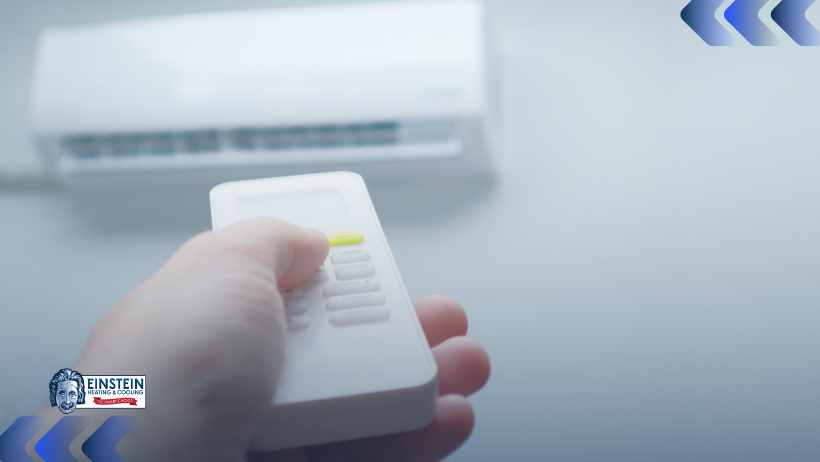
8. Brand Reputation and Reviews
- Research and choose reputable brands with a history of reliable products.
- Read customer reviews to gain insights into real-world performance and durability.
- Consider warranty terms and customer support offered by the manufacturer.
9. Aesthetics and Design
- Assess the aesthetics of the air conditioner, especially if it’s visible from the outside.
- Some units come with sleek designs and customizable panels to blend with your garage decor.
- Consider how the air conditioner’s appearance complements your workspace.
10. Local Regulations and Permits
- Check local building codes and regulations regarding air conditioner installations.
- Obtain necessary permits before installing the unit to avoid legal complications.
- Consult with local authorities or a professional installer for guidance.
Troubleshooting Common Issues
1. Insufficient Cooling
- Check if the unit is the right size for your garage.
- Ensure proper insulation and minimize heat sources in the garage.
- Clean or replace air filters regularly.
2. Leaks or Water Accumulation
- Inspect the drainage system for clogs or blockages.
- Verify the unit is installed with a slight tilt for proper water drainage.
- Schedule professional HVAC maintenance if leaks persist.
3. Unusual Noises
- Tighten loose components and screws in the air conditioner.
- Clear debris or obstructions from the fan blades.
- If the noise persists, consult the manufacturer or a professional technician.
4. Inadequate Ventilation
- Before placing an air conditioner in the garage, check for obstructions in the vent or exhaust hose.
- Ensure the venting system is correctly installed and sealed.
- Consider relocating the air conditioner for better ventilation.
Factors to Enhance Efficiency
1. Proper Installation
- Location: Install the air conditioner in a shaded area of the garage to reduce exposure to direct sunlight, which can increase the workload on the unit.
- Insulation: Ensure proper insulation around windows and doors to prevent heat transfer, allowing the air conditioner to maintain a consistent temperature more efficiently.
- Sealing: Seal any gaps or leaks in the garage walls, windows, and doors to prevent conditioned air from escaping and warm air from entering.
2. Regular Maintenance
- Filter Cleaning: Clean or replace air filters regularly to ensure unrestricted airflow and optimal performance. Clogged filters restrict airflow, forcing the air conditioner to work harder to maintain the desired temperature.
- Coil Cleaning: Periodically clean the evaporator and condenser coils to remove dirt and debris, which can impede heat transfer and reduce efficiency.
- Check Refrigerant Levels: Insufficient refrigerant levels can lead to decreased cooling capacity and increased energy consumption. Schedule regular inspections by a qualified technician to ensure proper refrigerant levels.
3. Optimal Temperature Settings
- Thermostat Programming: Set the thermostat to a moderate temperature that provides comfort without overworking the air conditioner. Avoid setting the temperature too low, as this can strain the unit and lead to excessive energy consumption.
- Use Programmable Thermostat: Invest in a programmable thermostat to adjust temperature settings based on your schedule, allowing the air conditioner to run more efficiently when needed and conserve energy when the garage is unoccupied.
4. Adequate Ventilation
- Proper Ventilation: Ensure proper ventilation in the garage to prevent heat buildup, which can cause the air conditioner to work harder to maintain a comfortable temperature. Install exhaust fans or vents to remove hot air and improve airflow.
- Clear Air Vents: Keep air vents unobstructed to allow for proper airflow throughout the garage. Furniture, tools, or other items blocking the vents can restrict airflow and reduce efficiency.
5. Energy-Efficient Upgrades
- Energy Star Rated Units: Consider upgrading to an energy-efficient garage air conditioner with an Energy Star rating, which indicates higher efficiency and lower energy consumption.
- Variable-Speed Compressor: Invest in a unit with a variable-speed compressor, which adjusts the cooling capacity based on demand, resulting in lower energy usage and improved efficiency.
- Insulated Ductwork: Insulate ductwork to prevent heat loss during air distribution, improving overall efficiency and reducing energy consumption.
6. Reduce Heat Generation
- Limit Appliance Use: Minimize the use of heat-generating appliances, such as dryers or space heaters, in the garage, especially during peak cooling hours. Excessive heat from these appliances can increase the workload on the air conditioner.
- LED Lighting: Replace incandescent or halogen bulbs with energy-efficient LED lighting to reduce heat output and lower the overall temperature in the garage.
7. Shading and Insulation
- Window Coverings: Install shades, blinds, or curtains on garage windows to block out direct sunlight and reduce heat gain. This can help maintain a cooler temperature in the garage and lessen the workload on the air conditioner.
- Insulation: Properly insulate the garage walls, ceiling, and door to minimize heat transfer, allowing the air conditioner to operate more efficiently and maintain a consistent temperature.
8. Seal Leaks and Gaps
- Weather Stripping: Install weather stripping around garage doors and windows to seal any gaps and prevent air leakage. This helps maintain the desired temperature in the garage and reduces the workload on the air conditioner.
- Seal Cracks: Seal any cracks or gaps in the garage walls and foundation to prevent warm air infiltration and improve energy efficiency.
9. Regular Inspections
- Professional Inspection: Schedule regular inspections by a qualified HVAC technician to assess the condition of the air conditioner and identify any potential issues. Addressing problems early can prevent costly repairs and ensure optimal efficiency.
10. Consider Garage Insulation
- Garage Door Insulation: Insulate the garage door to minimize heat transfer and maintain a consistent temperature inside the garage. This can help reduce the workload on the air conditioner and improve overall efficiency.
- Wall Insulation: Consider adding insulation to garage walls to further enhance energy efficiency and create a more comfortable environment.
Conclusion
Choosing and installing a garage air conditioner involves careful consideration of factors. By following the tips and guidelines provided in this comprehensive guide and trusting the HVAC technicians at Einstein Heating and Cooling, you can create a comfortable and efficient workspace in your garage, ensuring a cool environment for all your activities.

